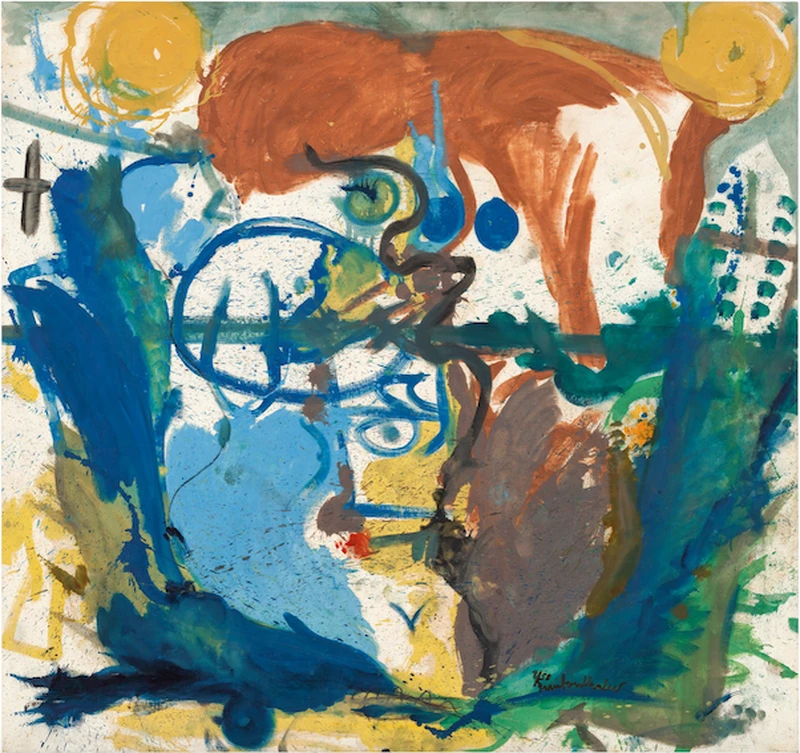Imagining Landscapes: Paintings by Helen Frankenthaler, 1952-1976
17 Jun-18 Sep 2021


I had the landscape in my arms when I painted it. I had the landscapes in my mind and shoulder and wrist.
—Helen Frankenthaler
Gagosian is pleased to present Imagining Landscapes: Paintings by Helen Frankenthaler, 1952–1976, an exhibition of thirteen paintings from the collection of the Helen Frankenthaler Foundation, several of which have never been exhibited before.
The references to landscape that are inherent in these paintings shift between subtle and explicit, as critic E. C. Goossen observed in 1958. All are characterized by an extraordinary variety of line and color. The earliest of them—painted in 1952, before Frankenthaler’s breakthrough development of soak-stain painting later that year with Mountains and Sea—is the work of an already mature artist: an invented panorama with suggestions of palm fronds and mountain peaks. The next belongs to a small group of canvases with drawn forms that Frankenthaler painted on her honeymoon with Robert Motherwell in the southwest of France. And four canvases from 1961—Fable, Beach Scene, Square Figure, and After Rubens—show her simplifying her drawing and making it more calligraphic, even as she continued to create figural as well as landscape references.
In three canvases from 1963, a major change is evident in Frankenthaler’s approach. Juxtaposed areas of lush stained color replace the lines of the earlier paintings, their irregular borders evoking the boundaries of natural forms. The titles of these works—Narcissus, Yolk, Sea Goddess—invite interpretation of their sometimes aqueous, sometimes cloudy forms in the manner that Leonardo da Vinci advised painters to look at stained walls and see in them images of the natural world. Even as Pop art was recuperating explicit depiction, and Color Field painting purist abstraction, Frankenthaler maintained in her own way an art of allusion—the richness of ambiguous reference—and cultivated a complexity akin to the volatility of the physical universe.